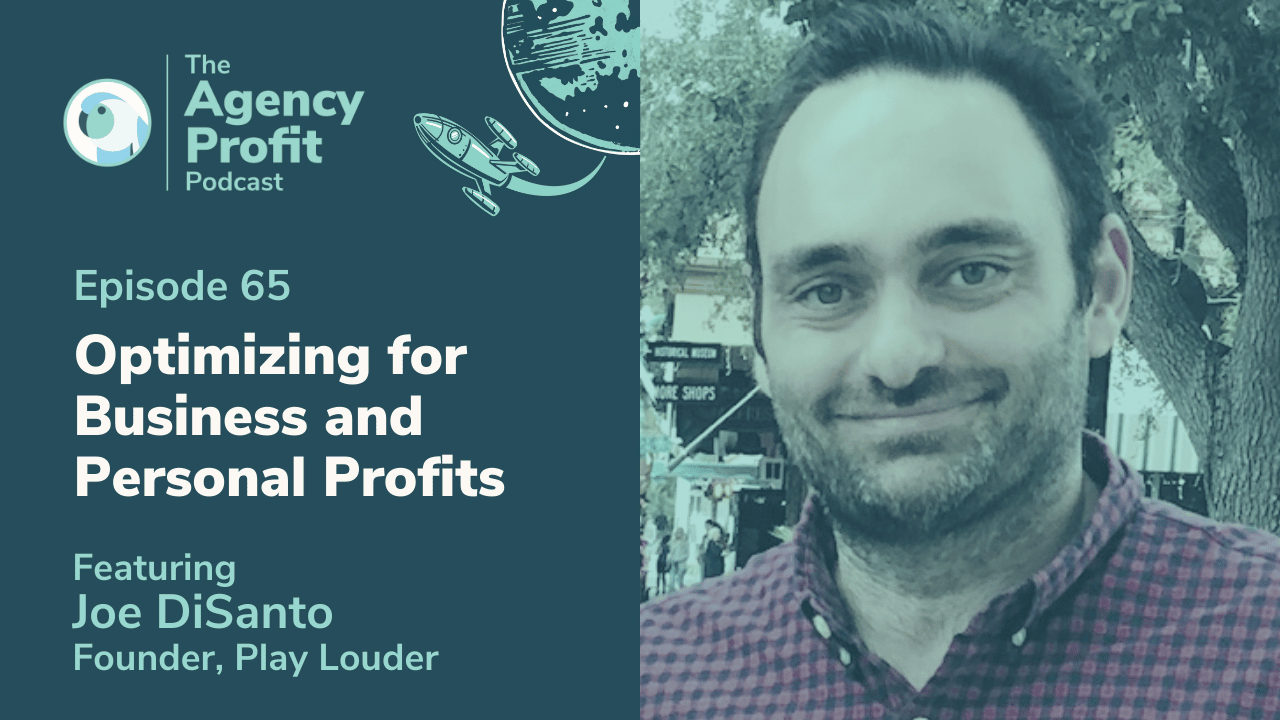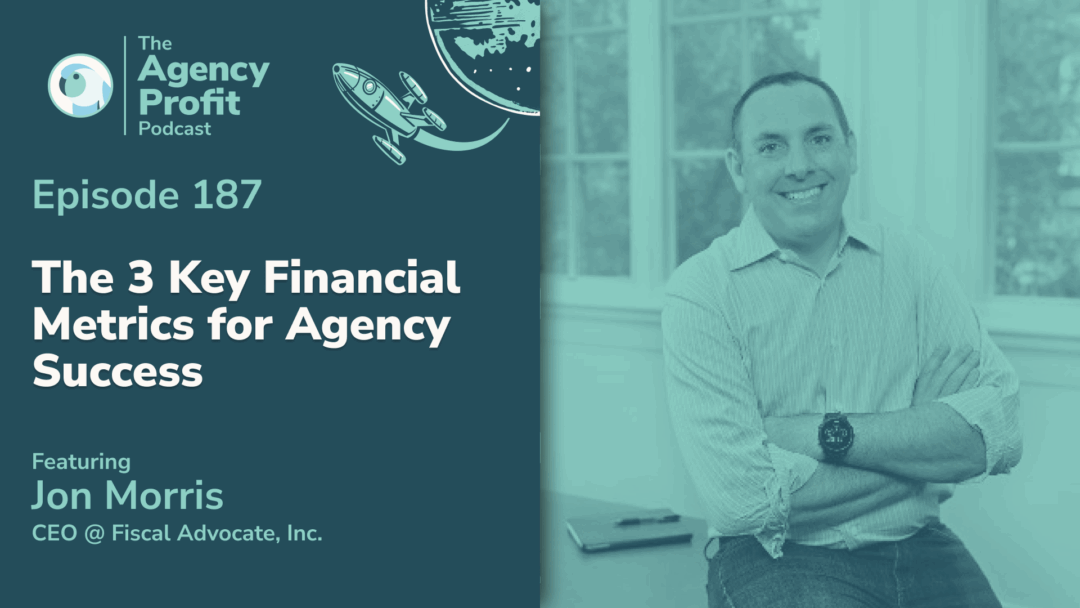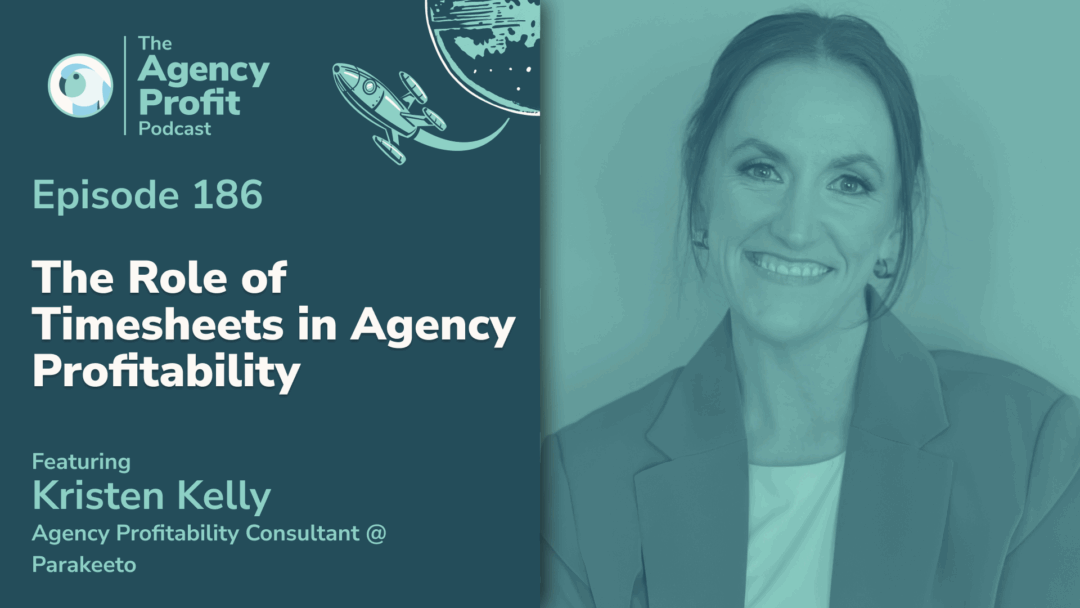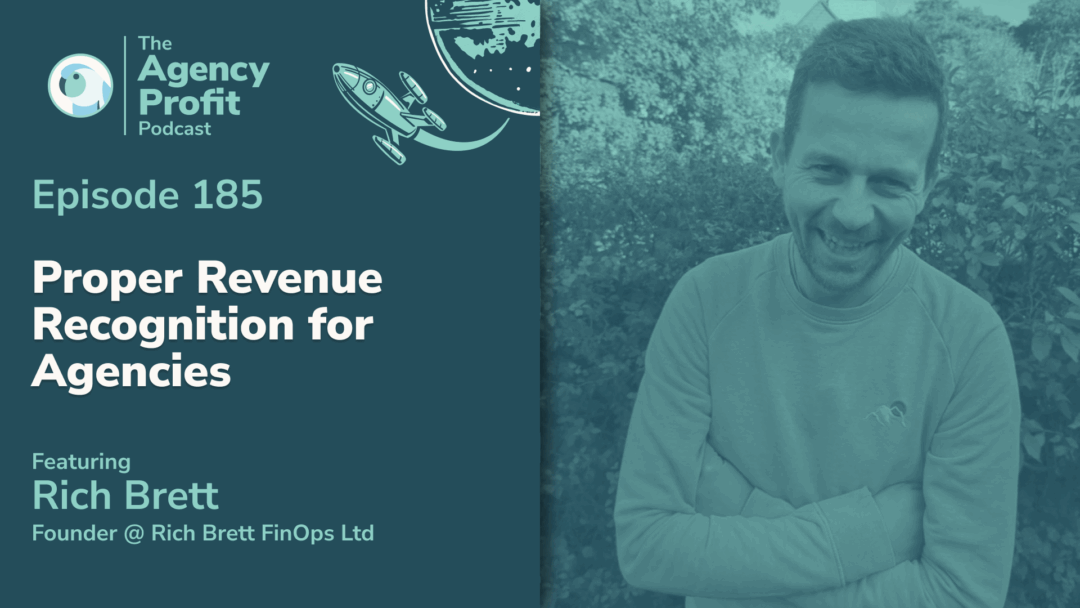Joe DiSanto is (by his own admission) a bit of a finance nerd, and has always fascinated by making the most of personal profits. Therefore, we were only too happy to pick his brain about how best to optimize business and personal profits holistically as an agency owner.
About Joe DiSanto…
Joe has built multi-million dollar businesses, produced critically acclaimed documentaries and an Emmy-winning TV show, invested millions in real estate, and semi-retired aged 43.
Now, he’s sharing a lifetime of fiscal know-how via Play Louder, an invaluable resource helping individuals and business owners increase their net worth, plus plan better for their future.
Joe and his family love to travel. Whether it’s house-swapping or buying a property in Belize – which, incidentally, he turned a decent profit on.
Points of Interest…
- How Joe Semi-Retired at 43 via Personal Profits… 1:40
- Looking at Your Profits Holistically 4:52
- Utilizing Personal Profits for Retirement 6:38
- Profit and Reward 10:06
- Focusing On The Gross Profitability 13:56
How Joe Semi-Retired via Personal Profits
Semi-retiring from your company at 43 may sound like the dream to some, and a nightmare for others. For Joe, it came about through investing a lifetime’s worth of energy into the business side of his Post/Production company.
In addition to managing the marketing, branding, project management, and sales, Joe also oversaw all the financial aspects. The short story is, he worked. Like, A LOT.
“I wanted our company to be successful, obviously, but I also wanted to ensure that both myself and my partners were coming away with something after all that hard work.”
Joe has always been into Personal Finance, namely making the most (and retaining as much) of the money you’re making – then making the most of that money by investing in other things. So, yes, you guessed correctly, Joe has an eye for investments, which contributed towards his early semi-retirement.
“I am working as a part-time CFO both for my old company and also for other creative service companies in Los Angeles, plus a couple in Austin, Texas. So, I have an interesting set of experiences of creating a company, kind of exiting – before figuring out a new role, and a new way to live by reinventing your life – all in a matter of 20 years.”
So, in Joe’s case; he had a gross profit target for the production company, which was relative to the overhead he was carrying. He was aware it was lower because he tended to work with a lot more contractors and carry a smaller, full-time staff.
When he would subcontract the post-production company inside of that project, that had its own gross profit target… This was also relative to how much overhead he was carrying there. Therefore, he was always thinking in terms of gross profit, but that target was adjusted based on overhead, relative to the revenue for that business.
Looking at Your Profits Holistically
Owning a business is great, but what is the actual point if you don’t receive any money at the end of the year?! This is why Joe currently devotes himself to not only helping his clients manage their business finance but also educating them regarding their personal finances. After all, they’re inextricably linked.
“If you are one of three owners, all the net really becomes your money… Money enters your life at the company, but it only becomes real when you’re filing your tax return and you’re realizing, ‘Okay, I actually made this much money for myself. It’s in my bank account – that’s what I’m going to use to plan for my retirement…”
Joe’s ethos, in the holistic sense, is looking at aaaaaallllll your financials as an entire entity. You must examine your whole life’s financial picture, not just your business. Your business is where the money comes in – but your savings account is actually the true net result.
Equally, you also need to treat your personal finances like a business…
“Just like any business, you’ve got income and expense in your personal finances. Obviously, the expenses include your kids’ school, or whatever. But that needs to be profitable as well. The true net-net of that is going to be your nest egg for potentially stopping working someday.”
Utilizing Personal Profits For Retirement
I can almost hear some of you scoff “Retire, me?! I’ll be mastering the entrepreneurial space ’til the day I die!” And, while that may be true, wouldn’t it be nice to have the option to kick back and take a break – not just in your dotage but your imminent future?
As entrepreneurs, we tend to put most of life’s risks into our business. Sometimes, we’re not even clear on what exactly that means for things like retirement or long-term financial planning. Therefore, I was keen to ask Joe exactly what we entrepreneurs should be thinking about – especially if you own a creative services business – when it comes to holistically planning for their own financial success.
“I would always calculate just on a project basis, the cost of things. Then I was figuring out which clients of ours/what jobs do the best, plus which do the worst. You start to figure it over time, whereby you can ask yourself which clients maybe do I want to get rid of, or which ones do I want to nurture. After that, you’re working on your net profit.”
***Joe digs into Freelancers or Full-Time and when to make that transition at the 7:54 mark***
Profit and Reward…
You, as an owner, do get stressed, you do get burned out. It’s like you need that reward… You need to see it happening; the money coming into your bank account. Truth be told, that’s not to say it might not have to come back out of your bank account, you know, and go and go back into the company.
“I have my little thresholds, building a system whereby I knew what my rough costs – plus revenue targets – in a job should be. If I met those targets, it was going to net down to this for me. This system involved looking at my gauged numbers, my revenue on a gross basis, and know it was going to cascade into my net result. Then, usually, I would only leave a couple of months’ cash flow buffer in our accounts before we’d withdraw money for ourselves. It all becomes taxable dollars at the end of the year; so if I’m paying taxes on it, I’m definitely going to take it out of the bank account.”
In short; try to work your way towards not funding any occurring shortages with your pay, build up your credit line, plus your credit, and manage any cash flow issues that way. You’ll get the business to be its own self-sufficient realm.
Now, if you’re concerned about draining the company account, that’s another story. If the business is such that you’re uncomfortable about taking money out and fretting about putting more money back in; then you have to worry if your line of work is, in fact, a good business to be in.
Side note: our Agency Profit Toolkit is a one stop shop for you to be able to outline some of these crucial profitability numbers to a potential buyer. Spreadsheets, templates and training videos, you name it, it’s all in the toolkit. Grab yours free at the link below:
Focusing On The Gross Profitability
there’s a couple of things that I want to reinforce and also provide some resources to our listeners/readers on, because we’ve covered a lot of these different topics, which cascade nicely into what we’ve been discussing here.
So, the first thing of critical importance is…
- Start with focusing on the gross profitability of your work. If that’s not present, everything will be harder.
- Once fixed, you can manage the net profit number (presuming the work is profitable, to begin with)
- Lastly; do you pull the money out, or do you reinvest it…
Take a step back and investigate if there is an opportunity to reinvest this money to keep up with demands, what you should get by way of return, then balance that against ‘Can I get credit for that?’ Then, also consider investing this money elsewhere and receive double returns. It all boils down to risk; is the risk higher in the business than outside the business?
Thinking of that, in a holistic way, is a powerful exercise. However, it all hinges on the ability to do that with confidence. This comes from good fundamentals in the business…
- Profitable work.
- Good financial management
- Visibility into your overhead
- How that relates to your gross profit
Only then can you actually make an informed decision on the age-old question; ‘if I put a dollar back into the business, what can I really realistically expect to get back out?’ Is it worth pumping some money back into changing your growth rate by a little bit? Is that going to have a material impact on your exit? Well, that’s assuming you have an exit plan, then you can actually make an informed decision about that.
These things all cascade together to make that pivotal question of ‘What do I do with this money?’ probably a lot easier to answer if your ducks are in a row beforehand.
***Helpful episodes in this regard include Chris Hervochon and our more recent chat with Michelle Seiler Tucker***
Key Takeaway… Profits are Earned
Take the reward… it’s what keeps you going, in a large way.
Unsurprisingly, Joe’s motto at Play Louder is ‘Work smarter, plan better, play louder.’ When he’s not consulting knee-deep in consulting work, he’s publishing new nuggets of financial know-how via his blog. Additionally, he hosts courses – both free and paid, so do check him out!
Want more from Joe? Check out…
- PlayLouder.com
- LinkedIn @josephdisanto
- Twitter @PlayLouder
Check out some of Play Louder’s most popular content…
- The Financial Planning Process: Your Route to Financial Independence!
- How to Incorporate Yourself to Save Money (and Protect Your Assets)
- How to Make Your Money Work for You: 7 Modern Methods for Investing in “The Market”
- Top 5 Personal Bookkeeping Software Options: Personal Capital vs Mint vs Quicken vs Money Dance vs Countabout
- Fundrise vs DiversyFund vs CrowdStreet: The Best Sites for Crowdfunded Real Estate Investing
- Acorns vs Robinhood vs Webull vs M1 Finance: Which One is the Best?
Play Louder’s free courses…
- Get a grip on your finances with Personal Budgeting Basics!
- Learn how to Incorporate Your Business to protect your assets and save money!
- Analyze your Real Estate Investments like a pro!
Did you learn anything new from this episode? Let us know in the comments below! Our next installment of #APP, on July 28th, will see us chat with Rahul Alim. Our previous blog with Ross Kimbarovsky is here…
Agency Profitability Tool Kit
If you’re looking for more resources to help you improve your agency’s profitability, check out the Agency Profitability Tool Kit. It’s full of templates and checklists we use when consulting clients, helping them improve profitability by over 100% – in under 60 days.








0 Comments